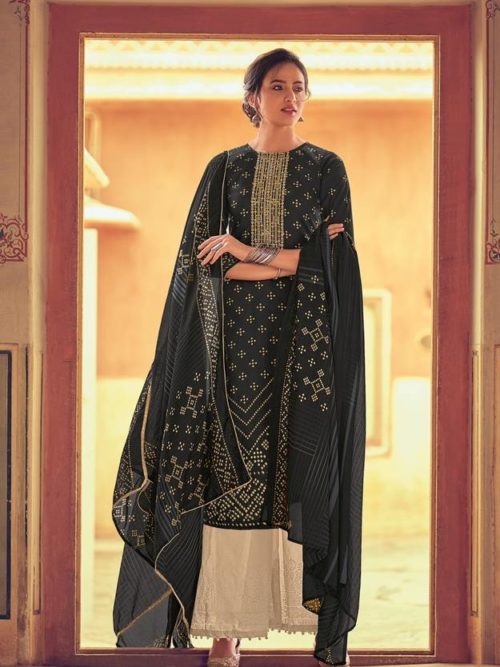Bandhani or Bandhej
Bandhani or Bandhej: Bandhej, otherwise called Bandhani, is a tie and color strategy rehearsed for the most part in conditions of Rajasthan, Gujarat and parts of Uttar Pradesh. The word Bandhani is gotten from a Sanskrit word Banda which signifies “to tie”. Bandhani is genuinely a workmanship that includes coloring a texture tied firmly with a string at a few points, creating an assortment of examples.
HISTORY
Bandhej is the most established type of tie and kick the bucket craftsmanship which started around 5000 years back. According to the verifiable proof, the first Bandhani saree was worn at the hour of Bana Bhatt’s Harshacharita in an imperial marriage. One of it’s most punctual visual portrayals can be found in the Ajanta caverns. In India, Bandhani work was begun by the Khatri Community of Gujarat. Places in Rajasthan like Jaipur, Sikar, Bhilwara, Udaipur, Bikaner, Ajmer, and Jamnagar in Gujarat are the notable focuses creating odhnis, sarees and turbans in Bandhani. It is an old type of workmanship which is still practically speaking.
TECHNIQUE
The craft of Bandhani is as energizing as it’s history. The texture to be colored is tied in all respects firmly at various focuses in tangles and after that colored with uncommon hues. At the point when this tied fabric goes for coloring, these strings or bunches doesn’t give that section a chance to catch shading and enables it to remain white or whatever shading the material has. When the material is colored, it is left for drying in outside. Drying can take some time contingent on the climate conditions. In rainstorm, it takes around 2 days to dry while in summer it takes just 4-5 hours. In winter it takes around 6-7 hours for drying.
STYLE & VARIETY
Bandhani arrives in an assortment of hues, structures and designs and these varieties are area explicit. The hues that are most noticeably utilized in Bandhani are yellow, red, green, blue and dark. After the preparing is finished, Bandhani work results into an assortment of images including specks, waves, strips and squares. The examples incorporate Leheriya, Mothra, Ekdali and Shikari relying upon the way wherein the fabric has been tied.
The outfits include Khombi, Patori, Gharchola and Chandrokhani. Bandhej work can be seen on Sarees, Kurtas, Salwar kameez, and Chaniya cholis. The structures incorporate Ekdali (single bunch), Trikunti (three bunches), Chaubandi (four bunches), Dungar Shahi (mountain design), Boond (little dab with a dull focus), Kodi (tear formed) and Laddu Jalebi (Indian desserts). Various hues transmit various implications in Bandhani.
WEARING THE ATTIRE
Straightforward Bandhani Salwar Kameez are a regular wear for some. Sarees with Leheriya examples are generally worn for day-time functions while Ghatchola lehengas and sarees are worn for events during the evening. Bandhej dupattas with plain white Salwar Kameez are prominent among little youngsters. Bandhej Sarees can likewise be worn by working ladies for an ideal style proclamation, yet keeping it inconspicuous.
GLOBAL APPEAL
Bandhani is genuinely a workmanship and it’s a typical sight to see ladies wearing outfits of Bandhej as well as the men can be discovered wearing turbans with Bandhej themes. The primary market is in Gujarat yet it is being sold all over India as the interest has expanded in the course of recent decades. The business shoot up during the wedding and happy seasons. Generally, it is utilized as odhnis by the women on festivals.


